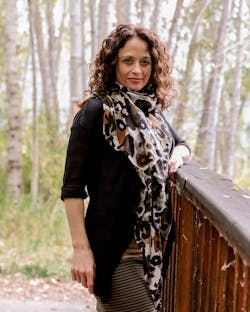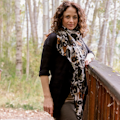Well, it was just a matter of time before we closed our doors again. But this time, it was different. Way different.
I was in Salt Lake City for a long weekend, when my office manager told me she was going to get tested for COVID-19. She hadn’t been feeling well for a couple days, and since my humble little town in Montana had just become a COVID-19 hot spot, I said, “Great. No worries. Just keep me posted.”
I pushed through the weekend, and on Sunday evening, just as I was about to board my plane, I got a call not only from my office manager but also the oral surgeon with whom I’d done a double-arch All-on-4 case five days prior. Both had tested positive. Double punch.
Here is a quick lowdown of my preflight checklist and talking points:
- Perception and image to a dental practice (or any business for that matter) are critical, especially as of late. If patients don’t feel safe, they won’t come in and will talk among themselves in the community. Since I live in a very rural area, it’s a no-brainer that gossip and speculation will fly faster than anything if patients believe their health and safety isn’t being properly considered.
- Since we reopened the office in May, there hasn’t been a lack of dental work. In fact, I’ve had some of my highest producing months in almost 16 years. I did apply for and use a PPP loan in March, of which I still had some money left over. Due to the high amount of production and collections, my financials were stable enough to keep my staff on payroll. While this may seem questionable or unreasonable to some, my decision was grounded in the fact that my staff is important to the success of my business. As such, giving them financial security during an unexpected hiatus was crucial. Furthermore, if you are shut down during COVID-19 and keep your staff on payroll, there is a 100% tax deduction. Win-win.
- Prior to this, we had some inkling as to what we would do with our schedule should a mass rescheduling have to take place. However, there was never a full-blown protocol put in place (March was a different animal altogether). In retrospect, that was a faux pas on my end. Here’s what actually transpired. My scheduler went in that Monday and started making calls to patients. We scripted a dialogue for her to use that would quell potential unease and ensure patients that dentistry is indeed safe. After some technical difficulties, my office manager was eventually able to log in remotely and help with schedule management. As a whole, our patients were all quite understanding and grateful.
- I asked a local dental colleague if he could take care of any emergencies, to which he happily and willingly agreed. I assured him the favor would be reciprocated if he ever needed it.
- The information on all government websites with regard to what to do or not to do in instances such as this is a total mess and, quite frankly, the biggest ball of rhetoric that I’ve ever had to filter through and make sense of in my life. Why? Because every town, county, and state—and dare I say “health official”—has different guidelines, interpretations, mandates, suggestions, and rules that crisscross, flip-flop, and contradict one another. What a freaking mess! (And I’m being very nice when I say that.)
In reality, I was left with my pragmatic approach to the situation. I’m not naive as to what’s going on; I have the advantage of seeing the status quo through a medical lens, and as such, it allowed me the perspective and ability to filter through the bombast of information out there that’s being skewed and misinterpreted through news, social media forums, and everything else in-between. You know exactly what I’m referring to. Essentially, as a business owner, I had to take the reins and do what was best for me, my staff, my patients, my business, and my community. Tough call? Yes, but that’s what we do.
As the week progressed and things settled in, our patients continued to be understanding (although my hygiene schedule is now out of control, I don’t have an opening until March, and yes, I’m looking for another hygienist).
Everyone is at last well, healthy, and continuing on that path called life. Was this a welcomed disruption? No. Have we made the best of it? Yes. Have I learned from it? Absolutely.
When March 2020 arrived, we all got cut off at the knees and were left like deer caught in the headlights trying to navigate toward something we had no clue about. There was so much unknown. But this time, I feel like we have our feet underneath us.
I was having a cup of coffee the other day, and I thought of an analogy that fits this scenario to a T. This “status quo” we exist in is like a revolving door. We are all waiting in line to pass through the “COVID-19 door.” It’s not a matter of if, but when. The experience for everyone will be different; regardless, the door will keep revolving and we’ll all eventually walk back into the swing of things. We just need to keep taking the necessary steps to move through the door.
I’m sure I’m not the only one who can shed light on this matter, but if I were to offer any advice, it would be that we need to be prepared for a closure—or at the very least, a modification of our schedules—at a moment’s notice. I confess that I was caught off guard and, to some degree, not as prepared as I should have been (but then again, walking through an airport on a Sunday prior to a busy workweek ahead isn’t ideal either). Don’t fall down the rabbit hole of panic and mayhem, as it is so easy to do. Reaffirm to your staff, patients, and community that dentistry is safe, needed, essential, and important to our continued health and well-being. Lastly, be flexible, compassionate, and don’t get emotional.
After a week of monitoring symptoms, my team is back at it. In the meantime, I enjoyed my cup of coffee while watching the snow fly in the frozen tundra that Montana is at this time of year.
What’s my take-home? No matter what, carpe diem because tempus neminem manet—seize the day because time waits for no one.
Cheers, all! S
As an aside, all of my patients, staff, and family are healthy and have come through everything A-OK. Yes, even yours truly. Fist bump!
Editor’s note: This article first appeared in Through the Loupes newsletter, a publication of the Endeavor Business Media Dental Group. Read more articles at this link and subscribe here.
About the Author
Stacey L. Gividen, DDS
Stacey L. Gividen, DDS, a graduate of Marquette University School of Dentistry, is in private practice in Montana. She is a guest lecturer at the University of Montana in the Anatomy and Physiology Department. Dr. Gividen has contributed to DentistryIQ, Perio-Implant Advisory, and Dental Economics. You may contact her at [email protected].



